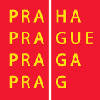Speaker
Description
Results on hadron production in high-multiplicity proton-proton (pp) and proton-lead (p--Pb) collisions at the LHC energies have revealed the presence of collective phenomena reminiscent to those observed in lead-lead (Pb--Pb) collisions. The bulk particle production in Pb--Pb collisions cannot be calculated from first principles of QCD and instead relies on thermodynamic and hydrodynamic modelling, which assumes a system in a kinetic and chemical equilibrium. On the other hand, some of the collective effects observed in pp collisions can be qualitatively described by phenomenological models, such as multi-partonic interactions (MPI) and color reconnection (CR), or color ropes and shoving. In order to understand the origins of collectivity in pp collisions it is important to isolate the soft regime of QCD, where such effects are pronounced, from the collisions where hard QCD scatterings dominate. Experimentally this can be done using event shape observables such as transverse spherocity $S_{\rm O}$ or self-normalized charged-particle density $R_{\rm T}$. In this talk I will overview the current results from double-differential studies of pp collisions and compare them to predictions from several Monte Carlo generators. In addition, I will discuss the future prospects of the event shape studies.

